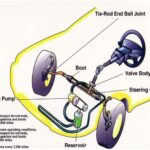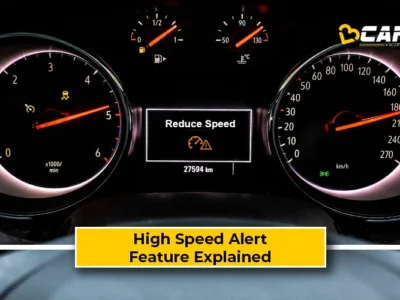
How to Reset the Tyre Pressure Warning Light (TPMS) on the Fiat 500

When the tyre pressure warning light (TPMS) appears on the Fiat 500 dashboard, it means that one or more tyres are either under-inflated or over-inflated. This could be due to a slow puncture, incorrect inflation, or temperature changes. Maintaining the correct tyre pressure is essential for safety, fuel efficiency, and tyre longevity.
This article provides a step-by-step guide on how to identify which tyre is low, determine the correct pressures for your Fiat 500, and reset the TPMS from inside the car.

What is the TPMS System and Why Is It Important?
TPMS Function in Your Fiat 500
The TPMS (Tire Pressure Monitoring System) constantly monitors your tyre pressure. If it detects that pressure is out of the recommended range (typically low), it illuminates a warning light on the dashboard. This helps prevent accidents, improves fuel efficiency, and reduces premature tyre wear.
What Can Trigger the TPMS Warning Light
- Underinflated tyre due to a slow puncture
- Temperature changes (air contracts in cold weather)
- Overinflated tyres from incorrect filling
- Sensor failures or depleted sensor batteries
How to Determine the Recommended Tyre Pressures
Identify the Correct Tyre Size
Check the tyre sidewall to find the size. For example, “185/55 R15” is common on many Fiat 500 models. All tyres should match in size to ensure proper TPMS readings.
Recommended Pressures Based on Vehicle Load
According to the Fiat 500 manual, the recommended pressures are:
- Medium load (2–3 passengers):
- Front: 2.2 bar (~31.9 PSI)
- Rear: 2.1 bar (~30.5 PSI)
- Full load (passengers + luggage):
- Front: 2.3 bar (~33.3 PSI)
- Rear: 2.3 bar (~33.3 PSI)
These values are standard for a compact vehicle like the Fiat 500.
You may be interested in reading How to Check Transmission Fluid in a Toyota Corolla
How to Check Transmission Fluid in a Toyota CorollaStep-by-Step: How to Check and Inflate Your Tyres
Always Check Pressure When Cold
Measure the pressure when tyres are cold (i.e., before driving or after less than 2–3 km). Cold readings are more accurate since the air hasn’t warmed and expanded.
Tools You’ll Need
- A reliable pressure gauge (digital or analogue)
- A pump (manual or electric) that allows you to fine-tune the pressure
Process to Check and Adjust Pressure
- Remove the valve cap and measure the pressure.
- If it’s below the target, inflate the tyre to the desired pressure (e.g., 32 PSI front, 30 PSI rear for medium load).
- If it’s too high, release some air.
- Recheck using the gauge.
- Once correct, replace the valve cap.
- Repeat this process for all four tyres.
Being precise is crucial so that the TPMS can register accurate values.
How to Reset the TPMS on the Fiat 500 from the Dashboard
Turn On the Ignition (Do Not Start the Engine)
Sit inside the car and turn the key to the ignition position. The engine doesn’t need to be running—just make sure the electronics are on.
- Press the Menu button on the steering wheel or dashboard.
- Press the “plus [+]” button repeatedly until you see Reset Tyres or Reset Tires.
- Select this option by pressing Menu.
- When prompted with “Do you want to reset?”, select Yes using the [+] button.
- Press Menu to confirm and save the setting.
After completing this, the TPMS will save the new pressures as the reference, and the warning light should turn off.
Helpful Tips and Precautions
Check After Resetting
Drive for a few kilometers and then check if the TPMS light remains off. If it turns back on, you might have a slow puncture or a faulty sensor.
Frequent Pressure Checks
Tyre pressures change over time. It’s recommended to check them at least once a month or before long trips.
You may be interested in reading How to Check Transmission Fluid in a Toyota Corolla
How to Check Transmission Fluid in a Toyota Corolla How to Add Power Steering Fluid to a Toyota Corolla
How to Add Power Steering Fluid to a Toyota CorollaWhat to Do if the Light Stays On
If the TPMS light stays on after following all steps:
- Inspect for slow leaks or punctures
- Check the condition of TPMS sensors (batteries may be low)
- Visit a certified technician for diagnostics
Benefits of Maintaining Correct Tyre Pressure
Safety and Performance
Properly inflated tyres provide better grip, more effective braking, and lower risk of hydroplaning.
Fuel Economy
Correct pressures reduce rolling resistance, leading to better fuel efficiency.
Tyre Longevity
The right pressure helps prevent uneven wear, extending the lifespan of your tyres.
Checking and properly inflating your Fiat 500 tyres, followed by a TPMS reset, is a simple but essential task. By following the steps in this guide, you’ll ensure your vehicle is safe, efficient, and reliable—avoiding unnecessary tyre wear and fuel waste.
To recap:
You may be interested in reading How to Check Transmission Fluid in a Toyota Corolla
How to Check Transmission Fluid in a Toyota Corolla How to Add Power Steering Fluid to a Toyota Corolla
How to Add Power Steering Fluid to a Toyota Corolla How to Check Ford Focus Transmission Fluid
How to Check Ford Focus Transmission Fluid- Identify your tyre size
- Adjust pressure based on load
- Always measure when tyres are cold
- Use a reliable gauge
- Reset the TPMS from the dashboard menu
- Recheck after driving
If you want to know other articles similar to How to Reset the Tyre Pressure Warning Light (TPMS) on the Fiat 500 you can visit the category Tips.
Leave a Reply






More content of your interest